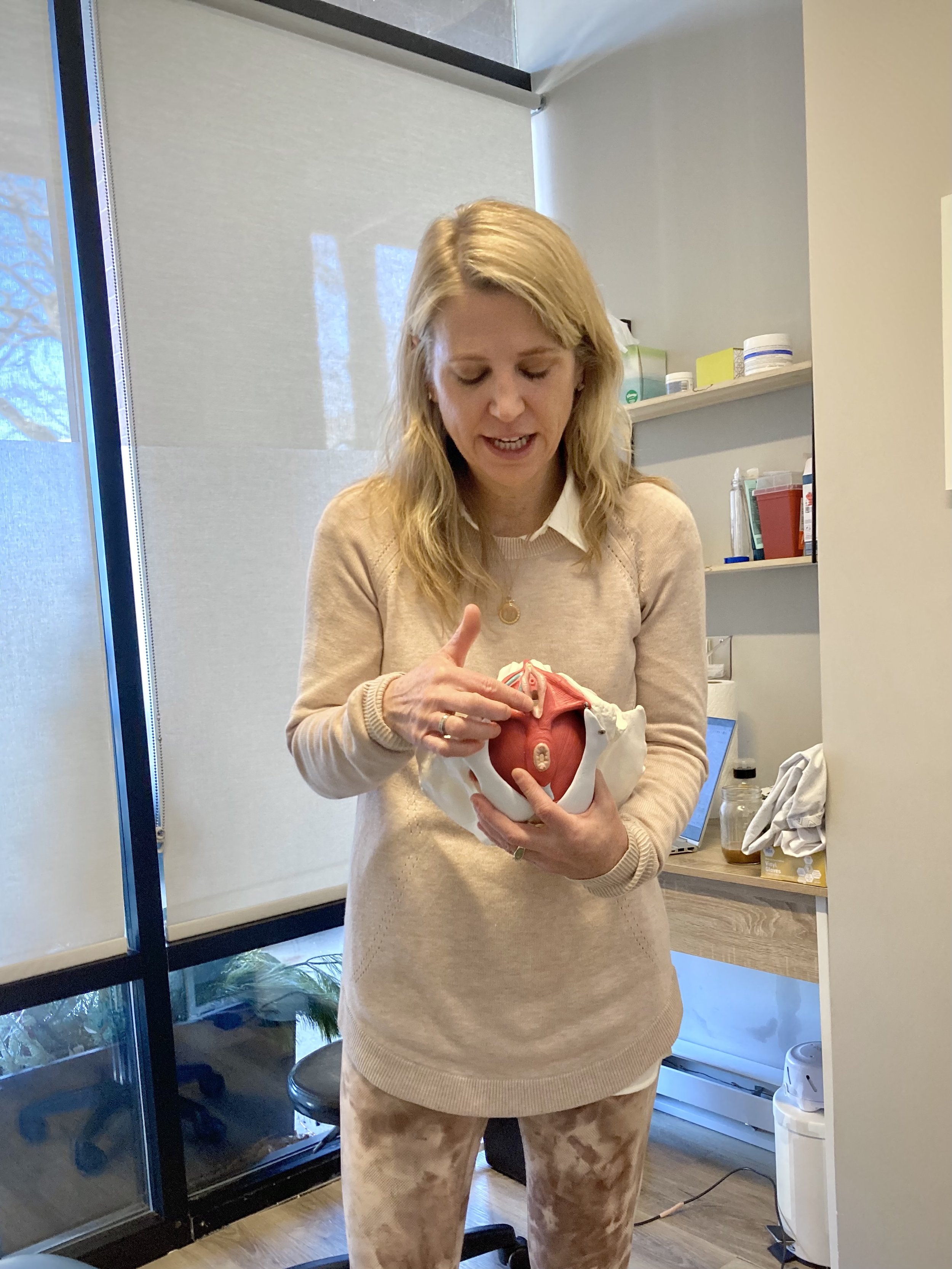
Welcome to the Chicago Physical Therapists Blog
A space for learning, encouragement and growth

Dyspareunia: Addressing Multifaceted Causes with a Comprehensive, Compassionate Approach
Physical therapy is a key part of treating dyspareunia. Our interventions are personalized to your specific needs and may include gentle massage techniques, relaxation exercises, stretching, and strengthening of core muscles. We focus not only on the pelvic floor but also on surrounding areas such as the hips, back, and even the rib cage, as imbalances in these areas can exacerbate pelvic pain. Self-care techniques are a cornerstone of our approach, empowering you to manage symptoms at home and, when appropriate, with your partner.
It’s important to recognize that while the pain is not “all in your head,” there is often a psychological component that plays a role. When intercourse is consistently painful, your body may develop a reflexive tightening of the pelvic muscles, which can worsen discomfort. This cycle of anticipation and tension can perpetuate the pain, making it even more important to address both the physical and emotional aspects of dyspareunia. Working with a counselor can help manage stress and fear surrounding intimacy, providing a more holistic approach to healing.
Internal Stretching of the Pelvic Floor With a Dilator
Dilators are tube shaped devices that come in varied sizes. They allow you to gradually stretch and desensitize the soft tissues of your vagina. By working through the different sizes you will slowly build confidence in your ability to have insertion into the vagina. It is common to start by first just holding and looking at the dilators. Then, as you are comfortable, progress to inserting the smallest dilator…

Internal Stretching of the Pelvic Floor
Rest in a sitting position with your back and legs supported by 3-4 pillows. Possible alternative positions: bathtub or on their bed in a semi-reclined supported position- even on the toilet with legs propped on a stool, or with one leg up or in a squatting position in the shower ( just be comfortable or you can’t relax)

Pelvic Floor Muscles: Do we really need to be able to isolate?
It is helpful if you can but whether or not you can feel the lift does NOT necessarily mean you will leak or have other issues related to “weakness”.
Pelvic floor muscles are meant to co-contract with the abdominal wall and with the glut muscles.

Re-establishing Good Bowel and Bladder Habits
Don’t JIC! This means forcing yourself to urinate ‘just in case’ – usually before we leave the house. Get into the habit of listening to your body and when you actually need to go to the bathroom. Remember you’re in charge of your bladder, not the other way around!

IS STRETCHING the answer to your pain?
(Spoiler alert, likely NO!) The muscles on the inside (adductors) and back (hamstrings) of your thighs and buttocks all attach to your pelvic bones. Tightness here can contribute to the tightness of the tissues and muscles of your pelvic floor region.

Improving the Resting Level of your Pelvic Floor Muscles
Often, tension in the pelvic muscles has been present for so long that we are no longer aware of it. If you lived next to an airport in time you would not notice the noise from the planes. Similarly if your muscles have been tight for a long time you are likely not aware that they are tight. We have to work to ‘reset’ what you understand to be normal. The way to start this is by beginning to have a general awareness of your pelvic muscles throughout the day.

Encouragement for Endometriosis
In this video, Meredy Parker, PT, DPT shares an uplifting story about a patient with Endometriosis. The experience spans years ranging from laparoscopy and residual pain to pregnancy, birth and postpartum recovery.
